PBOT’s North Portland in Motion plan is shifting into a higher gear.
After launching this plan in April, PBOT has shared a new analysis of the current transportation conditions in the area and they’ve just launched the project’s first open house.
According to PBOT’s (impressive) Existing Conditions Atlas, the north Portland region, located west of I-5, and east of the Willamette River with Columbia Blvd and Overlook Park providing borders to the north and south respectively, is home to about 60,000 people.
North Portland is also generally more racially diverse than the rest of the city of Portland as a whole, although this differs greatly between neighborhoods in the area. North Portland’s Portsmouth neighborhood is one of the most racially diverse areas in the entire state of Oregon, with less than half of its residents identifying as non-Hispanic white.
Advertisement
This is notable because redlining and racist city planning has created unequal access to community resources like accessible non-car transportation in Portland and across the U.S.
BikePortland has previously reported on the overrepresentation of low-income Black, Indigenous and people of color in pedestrian crashes in the state of Oregon.
North Portland isn’t the only part of the city with this issue, but it has yet to have an ‘in motion’ development plan like similar ones that have covered east, northwest, southwest, and the central city. Residents of north Portland have clamored for more attention to problems in their neighborhood, and PBOT has acknowledged this urgency by stating that the area is “long overdue for a community-driven transportation plan.”
You can participate in the online open house until January 31, 2022. After that, PBOT will begin further planning, with the project set to be adopted by city council in 2023.
We hope north Portlanders will share their experiences with the city to make it a more equitable region and reap the benefits other neighborhoods have gained from similar ‘in motion’ plans. If you live, work or play in the northern tip of the city, be sure to track this project, and stay tuned for updates.
You can browse the Existing Conditions report below…
[pdf-embedder url=”https://bikeportland.org/wp-content/uploads/2021/12/North-Portland-in-Motion-Existing-Conditions-12.02.21.pdf” title=”North Portland in Motion – Existing Conditions – 12.02.21″]


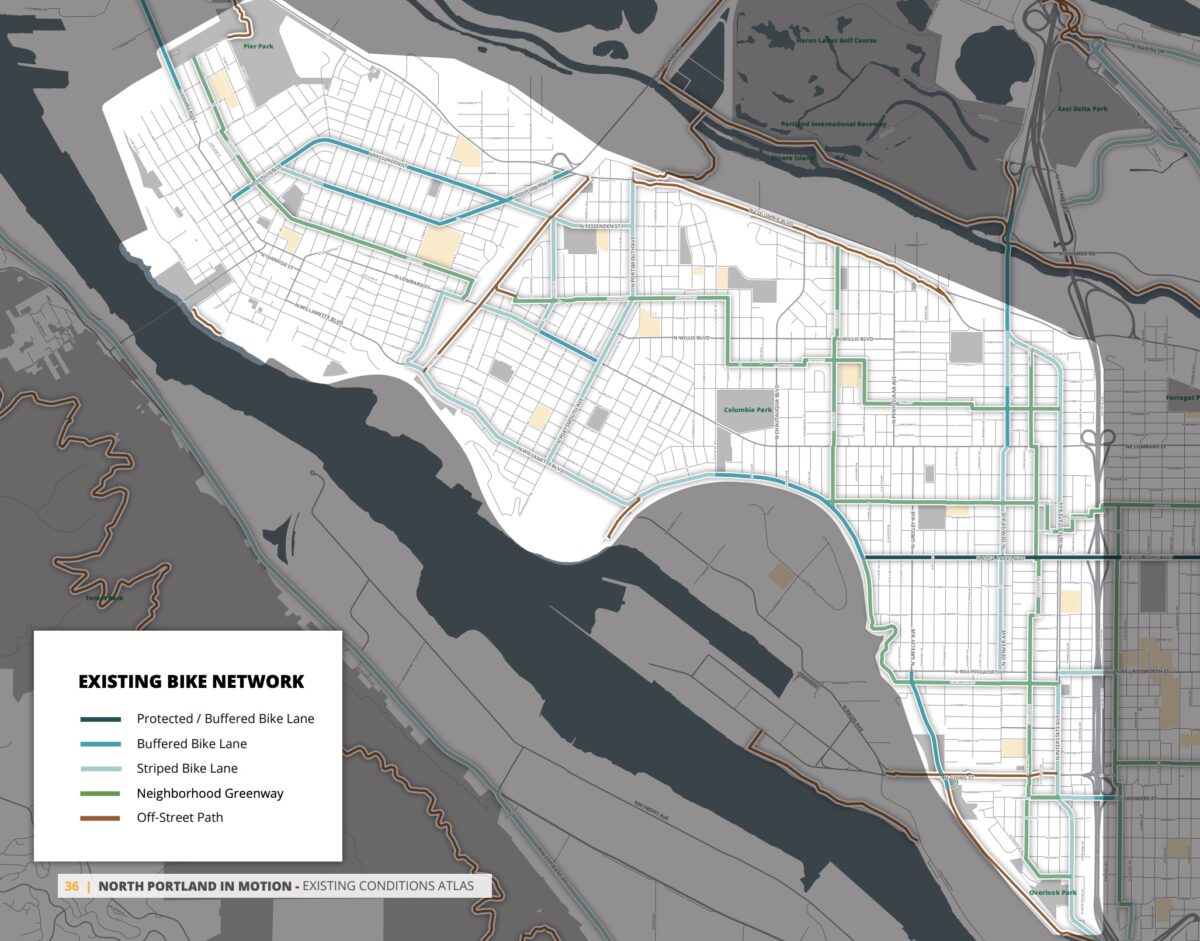
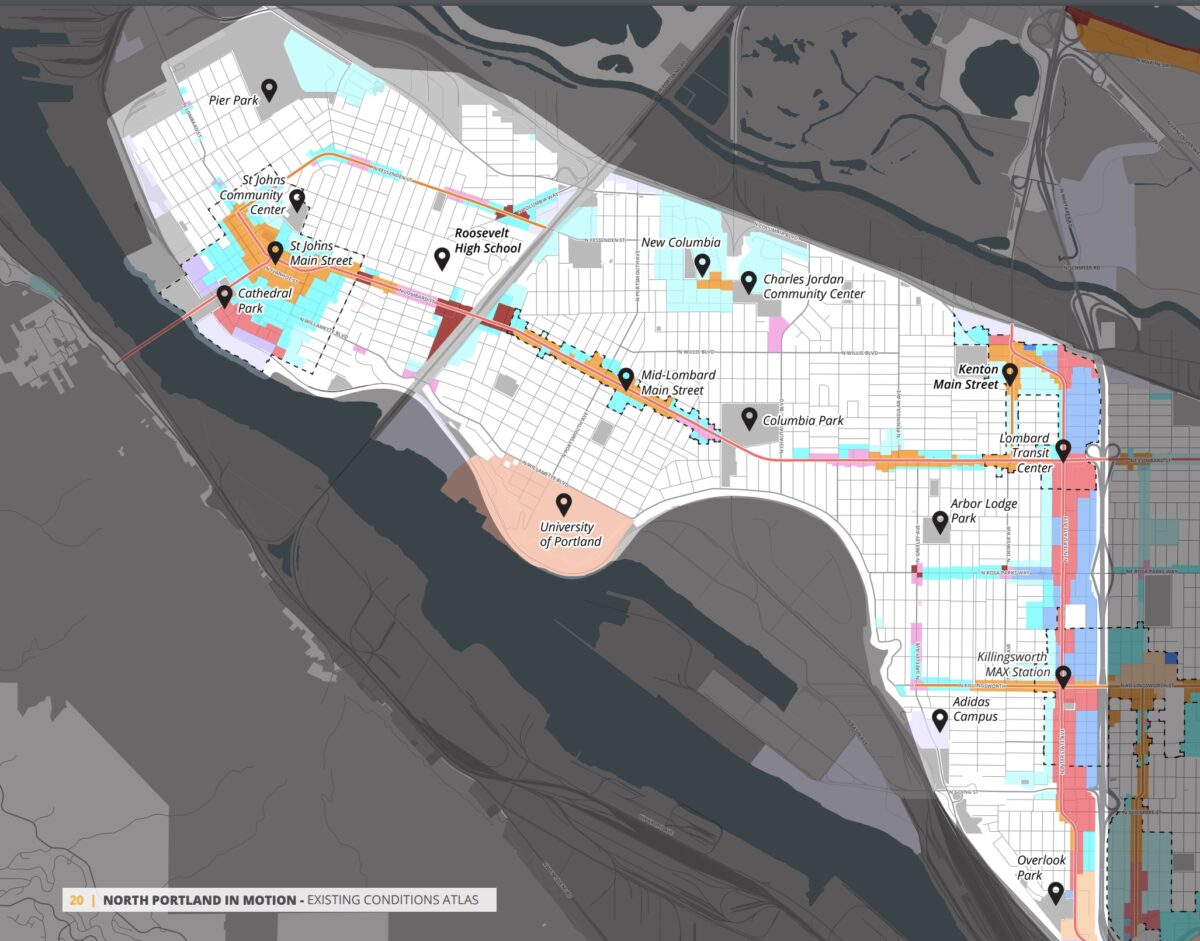

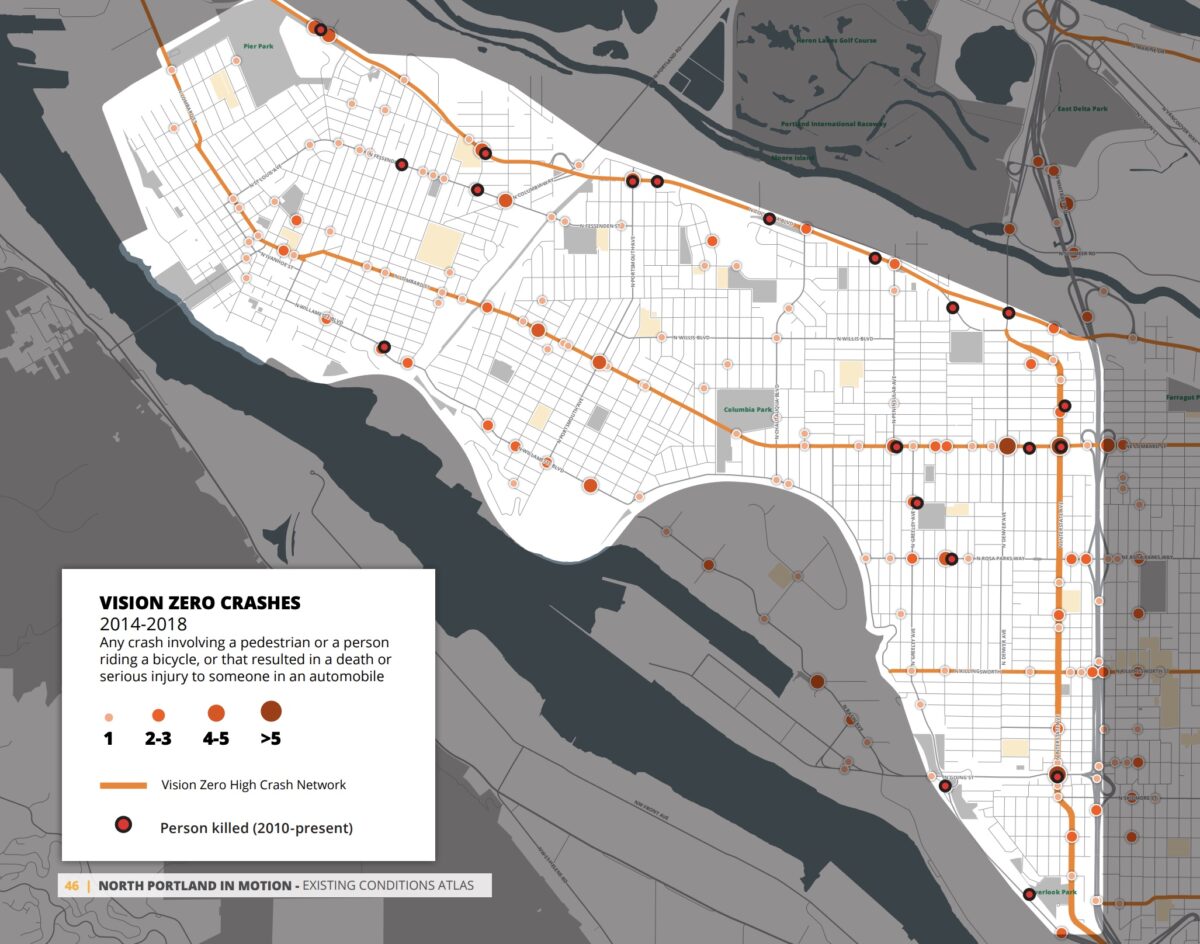
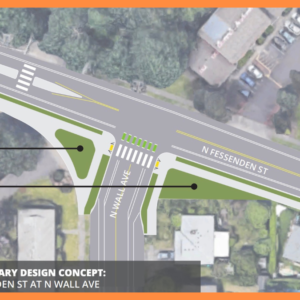

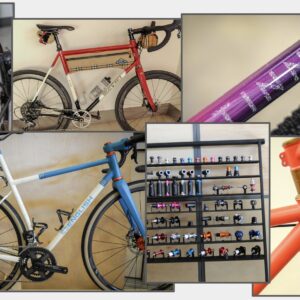

Thanks for reading.
BikePortland has served this community with independent community journalism since 2005. We rely on subscriptions from readers like you to survive. Your financial support is vital in keeping this valuable resource alive and well.
Please subscribe today to strengthen and expand our work.
I wish there was a chance for an aBRT line from St. Johns to Downtown along either Highway 30 or Greeley. Could be normal aBRT service along Lombard, but then non-stop service from either the St. Johns Bridge or Adidas until getting to downtown/PSU. Until transit travel times decrease, people won’t use it. Simple as that. And Portland doesn’t seem to recognize that.
Sorry, what’s aBRT?
Arterial bus rapid transit. Bus rapid transit that doesn’t have its own right of way due to a lack of road space (as would probably be necessary on Lombard, for instance), but that is limited-stop and pay-before-you-board to speed it up. An example is the A-line in the Twin Cities in Minnesota.
BRT Along Lombard between Interstate (MAX) and St. Johns that then expresses into downtown (maybe toss in a few stops in NW along HWY 30 for employment centers in that area) would be really attractive. It would be faster and cheaper than a MAX extension down Lombard.
It makes perfect sense but TriMet will never go for it. They are allergic to cost-efficient and relatively quick expansion of the transit system.
They tend to view transit expansion as primarily a way to increase the value of developers land and as a way to reduce 9-5 Monday-Friday commute times for suburbanites.
Couldn’t agree more. Whoever thought the Southwest Corridor LRT was a better use of funds than BRT or aBRT along Powell, Lombard, Chavez, Beaverton-Hillsdale, TV Highway, Barbur, or any of the other similar corridors (in fact, I bet they could do all of the above for the same cost) needs to walk.
Exactly. BRT has all the benefits (faster and higher-capacity service) with none of the drawbacks (single point failure and associated lack of reliability, massive cost) of LRT. TriMet’s remaining obsession with light rail with other cities are going all-in on and showcasing the benefits of BRT is baffling.
Line 35 is like a small-scale preview of what that would be like, and for those of us lucky enough to live near its weird route, it’s awesome! By far the fastest transit route in and out of downtown.
You seem to be blithely asserting that present lack of public transportation, and pedestrian deaths, are the result of overt racism. Ok, I’m thinking about the causal connection. Two historically black neighborhoods, Boise and Eliot, are very central and quite well connected to public transportation (hmmmmm, did the conspiracy overlook these would-be victims?). When redlining ended, people of color exercised their right to sell their (or their parents) inner city houses and many folks (and their renters) moved to the outer neighborhoods. These more suburban neighborhoods do indeed have fewer buses…..well, there is less density and more miles to drive to serve them. I wonder if basic issues of density have occurred to you. Pedestrian deaths probably are high in these less central (and more recently built) areas with the wider roads (and faster traffic) which were characterize city building in the latter half of the 20th century. By contrast, inner city streets have shorter blocks, are narrower, and probably have slower traffic. None of these dry facts fits the racial victimization ideology unfortunately.
Equal access to the real estate market leading to less concentrated poverty….well again, that doesn’t quite fit the racism narrative. Portland does inarguably have a long and dark history of explicit, terrible racism. That doesn’t mean that every situation we now find ourselves in is the result of ongoing racism. We would all like to live in a simple world with simple solutions and convenient bogeymen. Not an option.
In a world more driven by common sense than ideology (hello, Portland apocalypse) our solutions might turn out better. Just saying.
Wow, surprised Jonathan let this through. Although accurate, this comment will not be popular in the bike portland echo chamber.
I’m also surprised that it got through, mainly because it’s completely inaccurate.
Cmh89
You disagree with this?
No, that’s about the only thing that they said that was accurate. Most of this
The idea that gentrification is mostly pushing out willing homeowners of color who cashed out and happily moved to outer neighborhoods is just not true.
It also fails to acknowledge the role of disinvestment in less white and less economically advantaged neighborhoods. You can have wide streets that are safe, you can have long blocks that are safe. When you don’t build infrastructure like you do in say, NW Portland, it doesn’t really matter what the road looks like, its going to be dangerous.
Hi.
You are incorrect with your assumptions about this being an echo chamber. Perhaps you are new here, but I allow all types of perspectives to be shared here.
Thanks for your comment.
I’ve been following on and off for 5 years. I would generally agree there is an anti-police and anti-enforcement bias espoused by posted comments but that occasionally Jonathan does seem to allow dissenting opinions. It does seem like when they are allowed they get a lot of “likes”. This has been happening more recently with the increase in violence and decline of livability in Portland. Makes sense.
To say there is a bias is one thing, to say that Jonathan polices and doesn’t allow dissenting comments is quite another. I really don’t think he is stopping any opinions as long as they are respectful, regardless of what is being said. I do think that the forums are a bit of an echo chamber, but I also think that is a function of the topics covered here and who is interested in actively participating in these conversations. It has nothing to do with Jonathan policing the comment sections, which I think he does a great job with. Unfettered comment sections are a dumpster fire and he keeps these going very well and responds well to feedback and discussion on the topic. Kudos to you, Jonathan.
thanks Alex! I do put a lot of thought into comment moderation, and it will never be perfect because when it comes to hosted discussions about very sensitive/heated/complicated problems, mistakes and messiness just come with the territory.
“Blithely implying” is quite different than stating directly with abundant evidence. Did you read the evidence Taylor posted?
https://www.portland.gov/bps/history-racist-planning-portland
I thought this was a good format offered by PBOT, and had a very usable interface. I had signed up to be kept in the loop about N Portland in Motion news by email, and got this update last night with an invitation to chime in. I’ll share the basics of what I shared.
1. Flashing beacons at the Greeley/Willamette crossing–cars drive too fast up and down Greeley, and the curve makes it somewhat unsighted, especially when traffic is dense.
2. Make Denver Ave. a major bike thoroughfare. Protect its bike lanes. Concord just doesn’t cut it (very narrow), Interstate is too traffic-heavy. Willamette is great, but out of the way for folks further East. Route N/S Denver traffic to Interstate. Denver could be a key North-South route that runs from Kenton to Overlook (all the way to Going St.), which leads to…
…3. Rebuild the Going St. ped/bike crossing (at Concord St.). It sucks–too narrow and too tight a spiral. Especially sucks for anyone not walking.
4. Flesh out the connections to the Failing St. bridge over I-5. There are too few safe connections over I-5 once you are South of Ainsworth. The Failing St. bridge is nice, but totally isolated from the greenway network. Why is it even there if it is so inaccessible?
This fairly small mix of priorities would have the potential of connecting Kenton (and, by extension, Portsmouth and St. Johns), Arbor Lodge, Overlook, Mississippi, and Williams St. fairly directly, and from there, the rest of NE Portland.
Do you mean the Rosa Parks & Willamette crossing? Sounds like it. I agree, the curve makes it uncomfortable to cross.
I think he’s talking about trying to cross Greeley Ave (just north of Adidas) while biking/walking on Willamette. But, further up, crossing Rosa Parks at the curve to continue west on Willamette can also be tricky.
I meant the Greeley crossing as MattGee said, but now that you mention it, you’re absolutely right about that intersection too.
With regards to point #4, I’d rather see them turn Failing into a new greenway itself. It actually has significant potential, I think. From west to east, Failing to Ridgewood to Regents to Shaver to Mason could go all the way from Concord to 82nd without a single stressful intersection and with a fully intuitive routing if the crossings of major streets were upgraded.
Other than that, totally agree with everything you say.
I am so curious about the original rationale for such a solid piece of infrastructure with literally no official connections. A Failing Greenway would be great (well, other than the name).
Oddly enough the TSP has Mason St as the major bikeway. Not Failing (which crosses I5) or Shaver (which features an all-way stop crossing Mississippi which can be a life saver)
A MAX line above or below Lombard with protected bike lanes at street level should be the medium to long term goal. St. Johns is really lacking in public transportation and bike infrastructure.
We don’t even have a functional sewer system, so let’s not give TriMet any ideas about sinking hundreds of millions of dollars into a subway to St. John’s.
How about we leave NoPo alone your ripping down the Beautiful Homes and taking lanes of Traffic away is BS . You are ruining a Beautiful Part of Portland doing what you think is best , well you are wrong , try driving on Lombard between Interstate and St.Johns nearly impossible just leave things the way they were for those of us that have been living Here for 30 Years Plus.
I live in NoPo, drive Lombard on a very regular basis, and live very close to it. I have been in this neighborhood on and off for about 20 years. I personally have really liked the work they have been doing. People were driving way too fast and dangerously. We don’t need more cops enforcing slow speeds because changing traffic patterns is doing it for us. It’s not nearly impossible to drive between Interstate and St. John’s, it’s just not as fast as it was – and it shouldn’t be.
Change is going to happen whether you want it to or not; we need to recognize and respond to what’s changing in appropriate ways.
You don’t like that private property owners are using the free market to build additional housing on their land? I thought this was America?
I’m not going to address the rest of your comment **portion of comment deleted**
…I live in St. Johns and want our neighborhood to be liveable for the folks who live here IN 30 years. There is always going to be older residents. Should we just never improve anything to keep a tiny portion of the population happy?
Lombard is incredibly dangerous, no matter your mode of transport. Thank god it’s being improved before someone else gets killed.
Completely leaving the NP Greenway out of this plan, and excluding Swan ISland seems like an oversight of epic proportions!